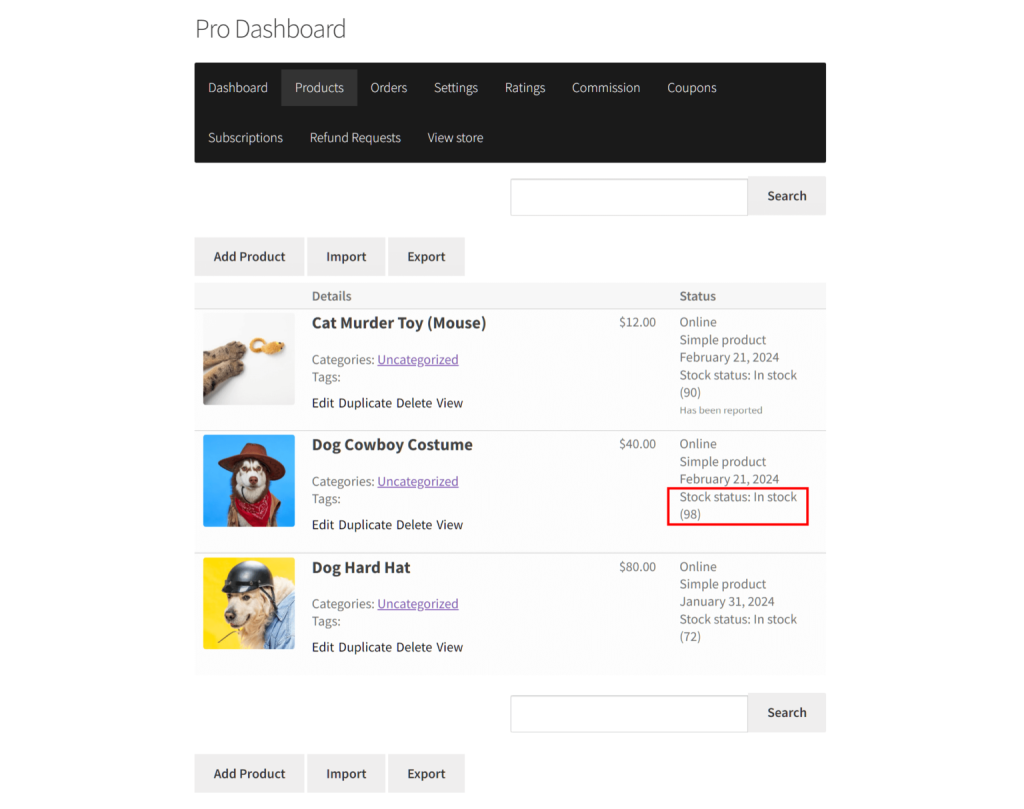
Do you ever notice how customer demand changes with the seasons? A seasonal pricing strategy can help your multivendor marketplace adapt and thrive during these shifts. By adjusting prices to match seasonal trends, you can increase vendor sales and keep customers coming back for more.
In this guide, we’ll walk you through the basics of seasonal pricing, share practical tips, and show you how WC Vendors make it easy to implement.
Let’s get started and help your marketplace make the most of every season!
What Is Seasonal Pricing?
Seasonal pricing refers to adjusting product prices based on seasonal demand. Vendors may increase prices during peak seasons or offer discounts to encourage sales during off-peak times. This strategy ensures your marketplace stays relevant and competitive while boosting profitability for vendors.
For example:
- Peak season: Vendors can set higher prices for holiday décor during December, when demand is at its highest. This ensures they maximize profits during the busiest time of the year.
- Off-season: Offering discounts on summer clothing during winter months can help vendors clear out inventory and attract budget-conscious shoppers. This strategy keeps sales flowing even during slower periods.
In a multivendor marketplace, helping vendors with seasonal pricing can increase their sales. It also improves the shopping experience for customers.
With the right strategy, shoppers will find high-demand seasonal items when they need them most. They’ll also appreciate great deals on off-season products. This keeps your platform attractive and ensures customers stay engaged throughout the year.
What Are the Benefits Of Seasonal Pricing?

1. Maximized revenue
Seasonal pricing helps vendors make the most of high-demand periods. During peak seasons, vendors can adjust prices to reflect the increased demand. This strategy boosts revenue without requiring more stock or resources.
During holidays or special events, higher prices on popular items can maximize profits. At the same time, vendors can manage their inventory more effectively by focusing on what sells best.
2. Increased customer engagement
Customers are drawn to deals that match their needs during specific times of the year. When vendors offer competitive seasonal prices, it encourages repeat visits.
This strategy builds customer trust and satisfaction. Shoppers know they can find great deals on your marketplace. This could be winter clothing on sale in January or discounts on school supplies in August. Over time, this builds trust. That trust grows into loyalty, making your marketplace their go-to place for seasonal shopping.
3. Improved vendor relationships
Helping vendors adjust prices easily strengthens their trust in your platform. When vendors can adjust prices quickly and efficiently, they feel more confident in your platform.
Tools like WC Vendors Pro allow them to manage seasonal pricing without extra hassle. This independence saves time and reduces frustration. Over time, these features show vendors that your marketplace is designed to support their success.
4. Efficient inventory management
Seasonal pricing helps vendors manage their inventory more effectively. By offering discounts during slower periods, vendors can clear out unsold stock. This prevents overstocking and frees up space for fresh, in-demand items.
It also minimizes the risk of holding onto outdated products that may lose value. With better inventory control, vendors can focus on meeting customer demand during peak seasons. This strategy ensures a smoother flow of goods throughout the year.
To learn more about empowering your vendors with effective inventory management tools, check out our article:
Marketplace Inventory Management:
A Complete Guide To Optimal Performance.
Seasonal Demand Examples
Understanding seasonal demand is critical for implementing an effective strategy. Here are a few examples:
- Holidays: Items like gift sets, holiday decorations, and winter apparel see a spike in demand during December. Customers often look for premium products and last-minute deals.
- Back-to-school: Sales of school supplies, backpacks, and gadgets like tablets and headphones peak in late summer. Parents and students are eager to grab essentials before the school year begins.
- Summer: Products like swimwear, sunscreen, and camping gear dominate sales during warmer months. Seasonal discounts or bundles can help vendors attract outdoor enthusiasts.
- Local events: Regional holidays or festivals can drive demand for unique items, such as traditional clothing, handcrafted goods, or event-specific memorabilia. Customizing pricing around these events can boost sales.
How To Develop Your Seasonal Pricing Strategy
Follow these steps to create a seasonal pricing strategy that benefits vendors and customers alike:
1. Analyze sales data
Start by examining past sales to identify patterns in product performance. WC Vendors’ reporting tools make this process straightforward. These tools allow vendors to view sales trends over time and filter results by date, product category, or vendor activity. This data helps pinpoint when specific products sell the most and when demand decreases.
Example:
A vendor selling swimwear notices a spike in sales during May and June but sees demand drop significantly in September. Using this data, they can plan to increase prices during the peak season and offer discounts in the off-season to clear out inventory.
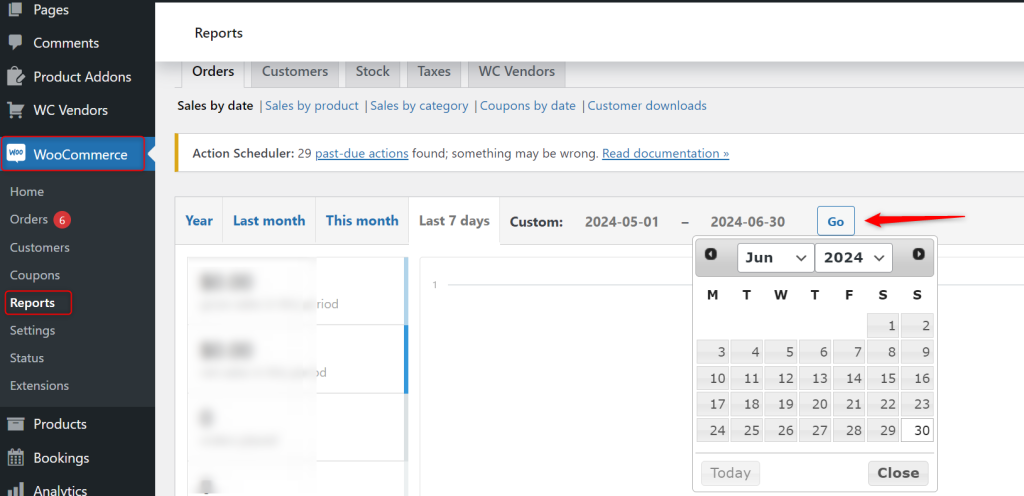
How to do it:
- Access reports: Log in to the WC Vendors dashboard. Navigate to the WooCommerce > Reports section.
- Filter data: Use date ranges to review sales during specific seasons or holidays. For instance, select “May to June” to analyze summer trends.
- Analyze categories: Sort sales by product category to see which items perform best during particular periods.
- Take notes: Record which months bring higher sales and which see slower activity.
Encourage vendors to repeat this analysis regularly. This ensures their pricing aligns with current trends and maximizes seasonal opportunities.
2. Communicate with vendors
Encourage vendors to embrace seasonal pricing strategies. Explain how adjusting their prices can boost sales during high-demand seasons. Share data insights to help them understand the value of this approach. Regular communication ensures they feel supported and informed.
Example:
If holiday décor sees increased demand in December, show vendors how a slight price increase during this period can maximize their revenue. Similarly, offer tips on using discounts to clear out unsold items after the holidays.
How to do it:
- Send reports: Use WC Vendors Pro to generate reports. Share them with vendors via email or vendor dashboards.
- Organize webinars: Host a short online session explaining seasonal pricing benefits.
- Create guides: Provide step-by-step tutorials on adjusting prices using the platform.
Encouraging vendors to participate in these strategies fosters a collaborative environment. It also helps the entire marketplace grow stronger.
3. Set seasonal pricing rules
Work with vendors to create clear and actionable seasonal pricing rules. These rules should address both peak and off-peak periods, making it easier for vendors to adjust their prices effectively. Consistent pricing strategies help vendors maximize profits while keeping customers engaged.
Example:
If swimwear sales peak in summer, encourage vendors to increase prices by 20% during June and July. For unsold stock in August, encourage vendors to offer a 15% discount. This helps clear inventory before fall. Vendors selling holiday décor can raise prices in December when demand is high. After the holidays, suggest adding discounts in January to attract shoppers and move leftover stock.
How to do it:
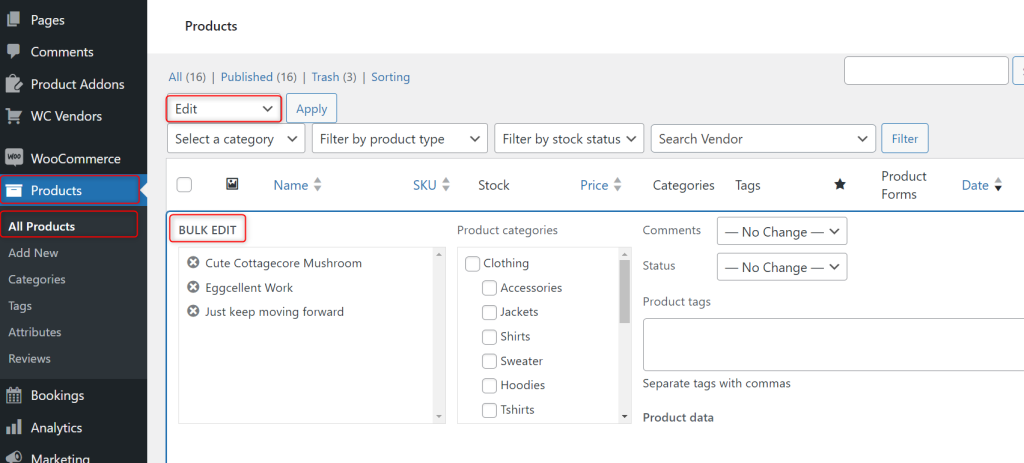
- Use bulk editing: Teach vendors how to adjust multiple product prices using WooCommerce’s bulk editing tool. This feature saves time and simplifies price management.
To use WooCommerce’s bulk editing tool, vendors can log in to their WooCommerce dashboard and navigate to Products > All Products. From there, they can filter and select products to edit, choose Bulk Actions > Edit, and update prices by entering a percentage change in the price field. Finally, click Update to apply the changes across selected products. - Schedule price changes: Show vendors how to pre-schedule pricing adjustments for specific dates. This ensures that changes go live automatically during seasonal peaks.
- Apply automated discounts: With Advanced Coupons, vendors can create targeted discounts that automatically activate during set periods. This simplifies offering seasonal promotions.
- Guide with examples: Provide vendors with a sample pricing template to follow. This can include suggestions for percentage increases or discounts during specific seasons.
By defining seasonal pricing rules, your marketplace becomes more dynamic. It ensures vendors make informed decisions while offering shoppers timely deals.
4. Plan promotions
Pairing seasonal pricing with promotions can maximize sales. Promotions attract more shoppers and encourage larger purchases. Tools like Advanced Coupons make it easy to create personalized and effective deals, such as bundle discounts or time-sensitive offers. This combination ensures your marketplace remains competitive and engaging during key seasons.
Example:
Vendors selling winter clothing can offer a “Buy 2, Get 1 Free” deal during December to increase sales. After the holidays, they can promote clearance discounts to clear out remaining stock quickly.
How to Do It:
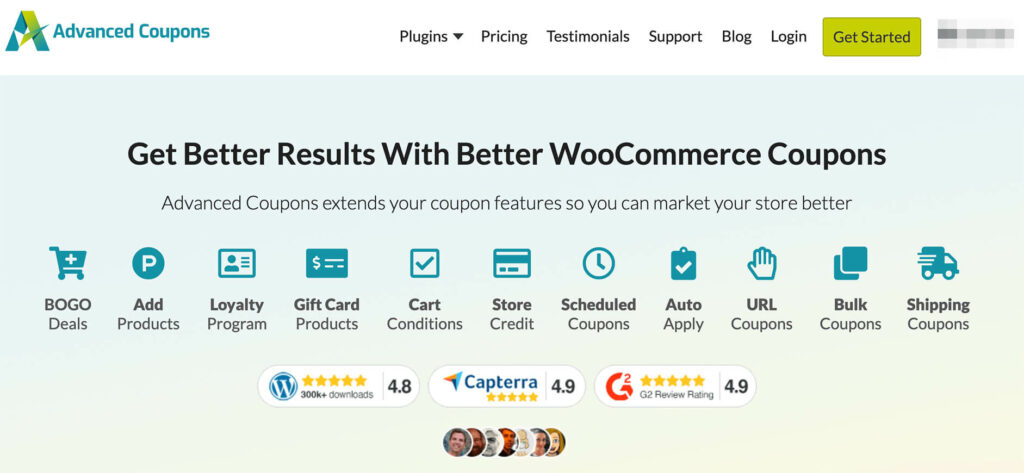
- Use Advanced Coupons: Install the plugin on your WordPress site. Create targeted promotions like percentage discounts, product bundles, or “Spend X, Get Y” deals.
- Promote deals via email: Send emails to keep everyone informed. For example, send updates to customers and vendors about upcoming promotions.
- Highlight expiry dates: Add countdown timers to your promotions to create urgency. Additionally, highlight expiration dates in bold to encourage quick action.
- Incentivize early purchases: Offer early bird discounts to customers who shop before the rush.
By combining strategic promotions with seasonal pricing, you can help vendors attract more customers. This approach also boosts overall marketplace activity.
5. Monitor and adjust
Seasonal trends don’t stay the same every year. Regularly reviewing sales data helps you spot shifts in demand. This allows you to refine your seasonal pricing strategy. By staying flexible, vendors remain competitive. Additionally, your marketplace continues to meet customer needs effectively.
Example:
If summer swimwear sales start earlier than usual, adjust the pricing timeline. Encourage vendors to act quickly. They can offer early discounts to attract buyers or raise prices during peak demand. This helps maximize revenue effectively.
How to do it:
- Use WC Vendors Pro reporting tools: Analyze historical data for trends in product performance. Identify products that consistently sell well during specific seasons.
- Review vendor feedback: Communicate with vendors to understand what worked and what didn’t. Ask them to share insights about their customers’ buying habits.
- Test and track: Experiment with slight pricing changes during the season. For instance, vendors could try different discount percentages or extend sales by a few days to see what generates the most engagement.
By actively monitoring your seasonal pricing strategy, you can adapt to changing trends. As a result, your marketplace stays relevant. It also ensures continued value for both vendors and customers.
How To Update Prices In WC Vendors
WC Vendors tools make it easy for vendors to implement seasonal pricing changes. Here’s a step-by-step guide:
For Vendors:
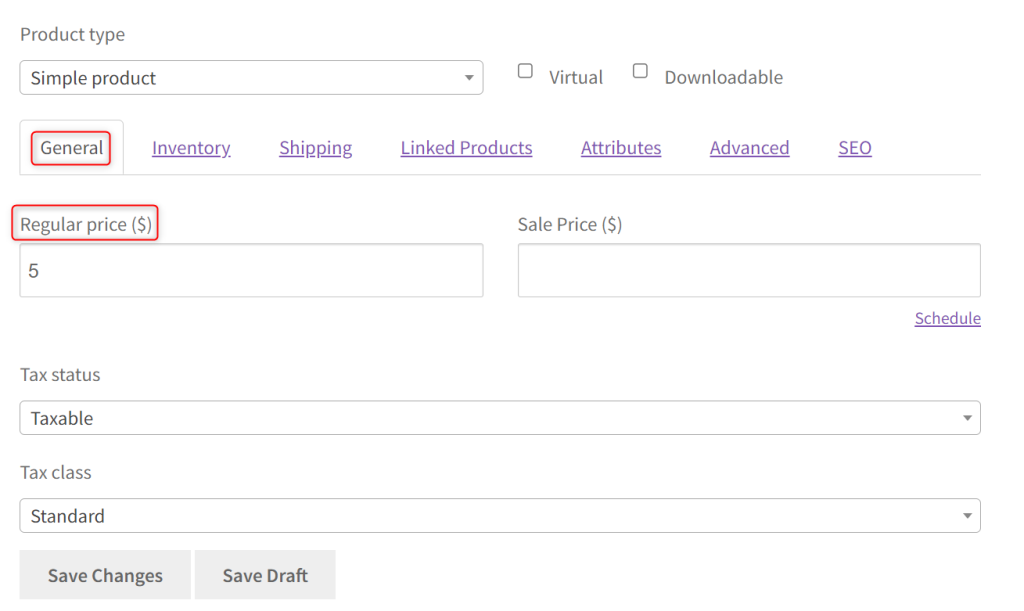
- Log in to the vendor dashboard.
- Navigate to products
- Go to the Products section in the dashboard.
- Edit product pricing
- Select a product and update the regular or sale price to reflect seasonal adjustments.
- Schedule sale prices
- Use the Sale Price Schedule feature to automate discounts for specific dates.
- Save changes
- Once the pricing is updated, click Save to apply the changes immediately.
For Admins:
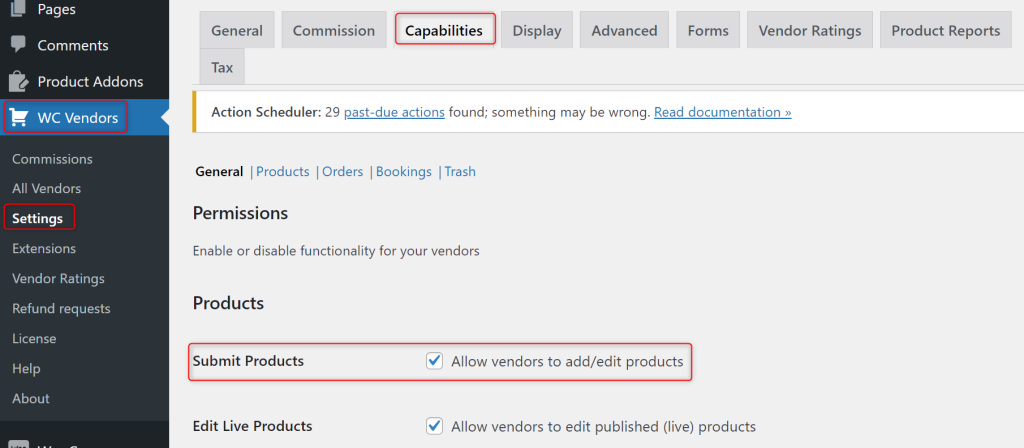
- Enable Price Adjustments
- Go to WC Vendors > Settings > Capabilities.
- Enable “Allow vendors to add/edit products” under Products and save.
- Monitor Trends
- Go to WC Vendors > Reports.
- Filter data by vendor or category to track seasonal price changes.
Conclusion
A well-executed seasonal pricing strategy can transform your marketplace. Vendors see higher sales, customers get great seasonal deals, and your platform becomes the top choice for shoppers. The key is to plan well, use the right tools, and stay adaptable to changing trends.
To make your seasonal pricing strategy a success, here’s what you need to focus on:
- Understand What Seasonal Pricing Is
- Know the Benefits of Seasonal Pricing
- Seasonal Demand Examples
- Develop a Strategy: Follow these steps to create a plan:
- How To Update Prices in WC Vendors
By focusing on these areas, you can create a vibrant marketplace that thrives during every season. Start implementing these strategies today, and watch your marketplace grow into a dynamic hub that vendors and customers trust.
If you need guidance or have any questions, feel free to reach out—we’re here to help you succeed!
